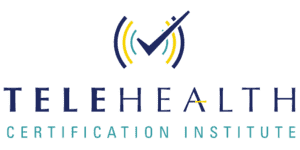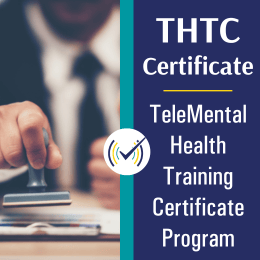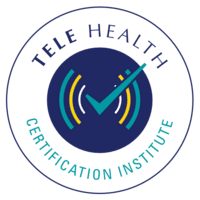“34-52-2. Treatment of patients through telehealth--Requirements. Any health care professional treating a patient in the state through telehealth shall be: (1) Fully licensed to practice in the state or employed by a licensed health care facility, an accredited prevention or treatment facility, a community support provider, a nonprofit mental health center, or a licensed child welfare agency under § 36-32-76; and (2) Subject to any rule adopted by the applicable South Dakota licensing body. Consultation between a resident health care professional and a nonresident health care professional under this chapter is governed by § 36-2-9. Source: SL 2019, ch 156, § 2; SL 2020, ch 165, § 49.” “34-52-3. Provider-patient relationship required--Exceptions. Telehealth may not be utilized by a health care professional with respect to any patient located in the state in the absence of a provider-patient relationship. Any health care professional who utilizes telehealth shall ensure that a proper health provider-patient relationship is established and includes: (1) Verifying and authenticating the location and, to the extent reasonable, identifying the requesting patient; (2) Disclosing and validating the health care professional's identity and applicable credentials, as appropriate; (3) Obtaining appropriate consent for treatment from a requesting patient after disclosure regarding the delivery models and treatment methods or limitations; (4) Establishing a diagnosis through the use of acceptable medical practices, including patient history, mental status examination, physical examination, and appropriate diagnostic and laboratory testing; (5) Discussing with the patient the diagnosis and its evidentiary basis and the risks and benefits of various treatment options; (6) Ensuring appropriate follow-up care for the patient; and (7) Providing a visit summary to the patient or consult note. Exceptions to the requirements of this section include on-call, cross coverage situations, and consultation with another health care professional who has an ongoing health care provider relationship with the patient and agrees to supervise the patient's care and emergency treatment. Source: SL 2019, ch 156, § 3.” “34-52-4. Treatment and consultation recommendations. Treatment and consultation recommendations made through telehealth via a health care professional shall be appropriately provided and within the health care professional's scope of practice, training, and experience. Source: SL 2019, ch 156, § 4.” “34-52-5. Face-to-face examination using real-time audio and visual technology. A health care professional using telehealth to provide medical care to any patient located in the state shall provide an appropriate face-to-face examination using real-time audio and visual technology prior to diagnosis and treatment of the patient, if a face-to-face encounter would otherwise be required in the provision of the same service not delivered via telehealth. Source: SL 2019, ch 156, § 5.” “34-52-6. Prescribing drugs. Without a proper provider-patient relationship, a health care professional using telehealth may not prescribe a controlled drug or substance, as defined by § 34-20B-3, solely in response to an internet questionnaire or consult, including any encounter via telephone. Source: SL 2019, ch 156, § 6; SL 2020, ch 151, § 2.” “34-52-7. Informed consent. A health care professional using telehealth shall follow any applicable state or federal statute or rule for informed consent. Source: SL 2019, ch 156, § 7.” “34-52-8. Medical records. A health care professional or the originating site treating a patient through telehealth shall: (1) Maintain a complete record of the patient's care; (2) Disclose the record to the patient consistent with state and federal laws; and (3) Follow applicable state and federal statutes and regulations for medical record retention and confidentiality.” “34-52-2. Treatment of patients through telehealth--Requirements. Any health care professional treating a patient in the state through telehealth shall be: (1) Fully licensed to practice in the state or employed by a licensed health care facility, an accredited prevention or treatment facility, a community support provider, a nonprofit mental health center, or a licensed child welfare agency under § 36-32-76; and (2) Subject to any rule adopted by the applicable South Dakota licensing body. Consultation between a resident health care professional and a nonresident health care professional under this chapter is governed by § 36-2-9. Source: SL 2019, ch 156, § 2; SL 2020, ch 165, § 49.” “34-52-3. Provider-patient relationship required--Exceptions. Telehealth may not be utilized by a health care professional with respect to any patient located in the state in the absence of a provider-patient relationship. Any health care professional who utilizes telehealth shall ensure that a proper health provider-patient relationship is established and includes: (1) Verifying and authenticating the location and, to the extent reasonable, identifying the requesting patient; (2) Disclosing and validating the health care professional's identity and applicable credentials, as appropriate; (3) Obtaining appropriate consent for treatment from a requesting patient after disclosure regarding the delivery models and treatment methods or limitations; (4) Establishing a diagnosis through the use of acceptable medical practices, including patient history, mental status examination, physical examination, and appropriate diagnostic and laboratory testing; (5) Discussing with the patient the diagnosis and its evidentiary basis and the risks and benefits of various treatment options; (6) Ensuring appropriate follow-up care for the patient; and (7) Providing a visit summary to the patient or consult note. Exceptions to the requirements of this section include on-call, cross coverage situations, and consultation with another health care professional who has an ongoing health care provider relationship with the patient and agrees to supervise the patient's care and emergency treatment. Source: SL 2019, ch 156, § 3.” “34-52-4. Treatment and consultation recommendations. Treatment and consultation recommendations made through telehealth via a health care professional shall be appropriately provided and within the health care professional's scope of practice, training, and experience. Source: SL 2019, ch 156, § 4.” “34-52-5. Face-to-face examination using real-time audio and visual technology. A health care professional using telehealth to provide medical care to any patient located in the state shall provide an appropriate face-to-face examination using real-time audio and visual technology prior to diagnosis and treatment of the patient, if a face-to-face encounter would otherwise be required in the provision of the same service not delivered via telehealth. Source: SL 2019, ch 156, § 5.” “34-52-6. Prescribing drugs. Without a proper provider-patient relationship, a health care professional using telehealth may not prescribe a controlled drug or substance, as defined by § 34-20B-3, solely in response to an internet questionnaire or consult, including any encounter via telephone. Source: SL 2019, ch 156, § 6; SL 2020, ch 151, § 2.” “34-52-7. Informed consent. A health care professional using telehealth shall follow any applicable state or federal statute or rule for informed consent. Source: SL 2019, ch 156, § 7.” “34-52-8. Medical records. A health care professional or the originating site treating a patient through telehealth shall: (1) Maintain a complete record of the patient's care; (2) Disclose the record to the patient consistent with state and federal laws; and (3) Follow applicable state and federal statutes and regulations for medical record retention and confidentiality.” “34-52-2. Treatment of patients through telehealth--Requirements. Any health care professional treating a patient in the state through telehealth shall be: (1) Fully licensed to practice in the state or employed by a licensed health care facility, an accredited prevention or treatment facility, a community support provider, a nonprofit mental health center, or a licensed child welfare agency under § 36-32-76; and (2) Subject to any rule adopted by the applicable South Dakota licensing body. Consultation between a resident health care professional and a nonresident health care professional under this chapter is governed by § 36-2-9. Source: SL 2019, ch 156, § 2; SL 2020, ch 165, § 49.” “34-52-3. Provider-patient relationship required--Exceptions. Telehealth may not be utilized by a health care professional with respect to any patient located in the state in the absence of a provider-patient relationship. Any health care professional who utilizes telehealth shall ensure that a proper health provider-patient relationship is established and includes: (1) Verifying and authenticating the location and, to the extent reasonable, identifying the requesting patient; (2) Disclosing and validating the health care professional's identity and applicable credentials, as appropriate; (3) Obtaining appropriate consent for treatment from a requesting patient after disclosure regarding the delivery models and treatment methods or limitations; (4) Establishing a diagnosis through the use of acceptable medical practices, including patient history, mental status examination, physical examination, and appropriate diagnostic and laboratory testing; (5) Discussing with the patient the diagnosis and its evidentiary basis and the risks and benefits of various treatment options; (6) Ensuring appropriate follow-up care for the patient; and (7) Providing a visit summary to the patient or consult note. Exceptions to the requirements of this section include on-call, cross coverage situations, and consultation with another health care professional who has an ongoing health care provider relationship with the patient and agrees to supervise the patient's care and emergency treatment. Source: SL 2019, ch 156, § 3.” “34-52-4. Treatment and consultation recommendations. Treatment and consultation recommendations made through telehealth via a health care professional shall be appropriately provided and within the health care professional's scope of practice, training, and experience. Source: SL 2019, ch 156, § 4.” “34-52-5. Face-to-face examination using real-time audio and visual technology. A health care professional using telehealth to provide medical care to any patient located in the state shall provide an appropriate face-to-face examination using real-time audio and visual technology prior to diagnosis and treatment of the patient, if a face-to-face encounter would otherwise be required in the provision of the same service not delivered via telehealth. Source: SL 2019, ch 156, § 5.” “34-52-6. Prescribing drugs. Without a proper provider-patient relationship, a health care professional using telehealth may not prescribe a controlled drug or substance, as defined by § 34-20B-3, solely in response to an internet questionnaire or consult, including any encounter via telephone. Source: SL 2019, ch 156, § 6; SL 2020, ch 151, § 2.” “34-52-7. Informed consent. A health care professional using telehealth shall follow any applicable state or federal statute or rule for informed consent. Source: SL 2019, ch 156, § 7.” “34-52-8. Medical records. A health care professional or the originating site treating a patient through telehealth shall: (1) Maintain a complete record of the patient's care; (2) Disclose the record to the patient consistent with state and federal laws; and (3) Follow applicable state and federal statutes and regulations for medical record retention and confidentiality.” We are not aware of any specific rules and regulations of the practice of telemental health services for Psychologists. VSD Codified Laws Sec. 34-52-1 “"Telehealth," the use of secure electronic information, imaging, and communication technologies by a health care professional to deliver health care services to a patient, including interactive audio-video, interactive audio with store and forward, store-and-forward technology, and remote patient monitoring. Telehealth does not include the delivery of health care services through electronic means under the provisions of chapter 27A-10.” As a party state to the Nurse Licensure Compact (NLC), South Dakota issues multistate licenses to nurses and applicants who reside in the state and recognizes multistate licenses issued by other party states, for practice in South Dakota. A nurse holding a multistate license is entitled to practice in any NLC party state, but must comply at all times with the laws of the state where he or she is currently practicing.” “It should be noted that not every state in the US is an NLC party state; a map of participating states, as well as further resources related to the NLC, are available on the Nurse Licensure Compact website.” Refer to the source provided for all requirements and limitations. Sources: SD Medicaid Billing and Policy Manual: Telemedicine, p. 7 (Jul. 2019) ¨Reimbursement Refer to the source provided for all requirements and limitations. Source: SD Medicaid Billing and Policy Manual: Telemedicine, p. 3 (Jul. 2019) Originating Site Reimbursement: Source: SD Codified Laws Ann. § 58-17-168. (SB – 137) ¨No health insurer may exclude a service for coverage solely because the service is provided through telehealth and not provided through in-person consultation or contact between a health care professional and a patient. Health care services delivered by telehealth must be appropriate and delivered in accordance with applicable law and generally accepted health care practices and standards prevailing at the time the health care services are provided, including rules adopted by the appropriate professional licensing board having oversight of the health care professional providing the health care services. Health insurers are not required to provide coverage for health care services that are not medically necessary. Refer to the source provided for all requirements and limitations. We are not aware of any explicit payment parity. *Clinicians who have had an experience with telehealth reimbursement in this state are invited to share their experiences in the comments section below: a) type of service provided; b) insurance provider; c) payment parity, payment issues, or insurance requirements. We are not aware of any permission that allows for services delivered by out-of-state providers.Counselors
Social Workers
Marriage and Family Therapists
Psychologists
Psychiatrists
South Dakota Professional Regulation/Health & Safety Online Prescribing
No reference found.
Nurses
South Dakota Professional Regulation/Health & Safety Online Prescribing
No reference found.
Medicaid Telehealth Parity Law
Providers must bill for services at their usual and customary charge. Providers are reimbursed the lesser of their usual and customary charge or the fee schedule rate. The maximum allowable reimbursement for distant site services is listed on the applicable fee schedule. The maximum allowable amount for services provided via telemedicine is the same as services provided in-person."
Originating sites listed in the eligible provider section are eligible to receive a facility fee for each completed telemedicine transaction for a covered distant site telemedicine service. Sites not listed may also serve as an originating site but are not eligible for reimbursement. The originating site and distant site must not be located in the same community unless the originating site is a nursing facility. This applies regardless of whether the originating site is eligible for reimbursement from South Dakota Medicaid. Originating site are not reimbursed for any additional costs associated with equipment, technicians, technology, or personnel utilized in the performance of the telemedicine service. Private Pay Telehealth Parity Law
Payment Parity
Permission for the Temporary Practice of Clinicians Licensed Outside the State
South Dakota
Note: As this is a free resource and Rules and Regulations regarding Telehealth are always changing, we appreciate any updates or corrections. They can be emailed to us at [email protected] with a link to the source or a citation of the rule or regulation.
Telemental health is not a separate service from mental health services. All state licensing boards require that licensed clinicians follow all the regulations for practicing under their license no matter what medium of communication is used. All licensing boards also require that clinicians only practice within the boundaries of their competence. This usually requires education, continuing education, and/or supervision in telemental health. Complete our telehealth training program to cover all the essential competencies of providing telemental health services and earn the THTC (Telemental Health Training Certificate).




The course was so informative and I was glued to my screen for the entire duration. I received so much knowledge concerning ethics in telehealth and I am greatly encouraged to read about all the standards and policies that pertain to my practice. Thank you!.